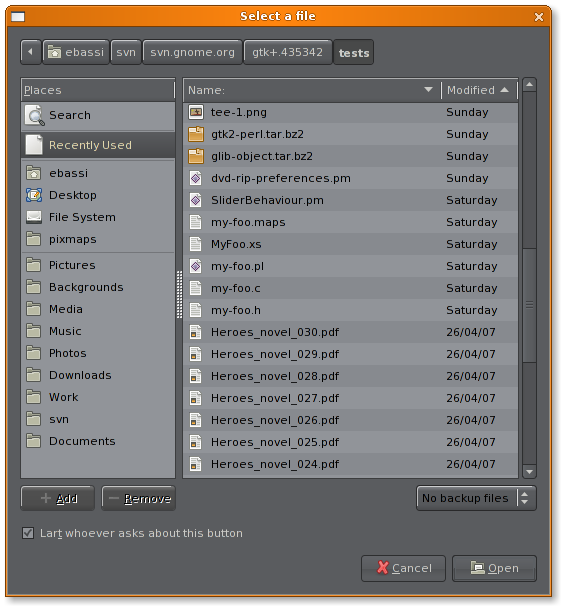Clutter – If release 0.4 rocked hard, release 0.6 of Clutter will blow your mind away. Just to list some features landed in the past couple of weeks after ClutterScript got in:
- new event handling, borrowing from the W3C DOM event – that is, two event phases: capture, which traverses the scene from the stage to the actor that received the event, and bubble which traverses the scene from the actor to the stage. You can block the event chain in any point of both phases by simply returning
TRUEin the signal handlers (like GTK+); kudos to mallum and Pippin - improved text scaling, at least for downscaling at ~50%; kudos to Pippin
- build and test on win32 using the SDL backend, complete with VS2005 build files; kudos to tf
- time-based timelines, so you can define a
ClutterTimelineby giving its length in milliseconds; and without even breaking the API.
Still, there’s plenty more coming – so keep looking at trunk.
JSON-GLib – The code base has been consolidated a lot while working on ClutterScript, so I feel confident about making a release of the out-of-tree repository. The release is bagged, tagged and signed as json-glib-0.2.1 in the git repository ((As usual, at http://folks.o-hand.com/~ebassi/git/json-glib.git)). You can grab the tarball here. Work on seamless GObject-JSON (de)serialization will continue in the master branch towards a 0.4.0 release. Update@2007-10-16T23:30+0100: obviously, as soon as I got back home and checked the repository I found two bugs in the generator code; hence, brown paper bag release 0.2.1. Tarball, documentation and tag updated.

